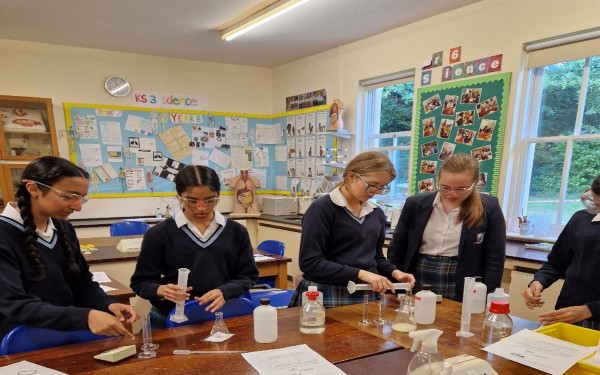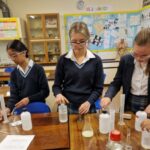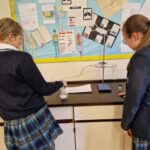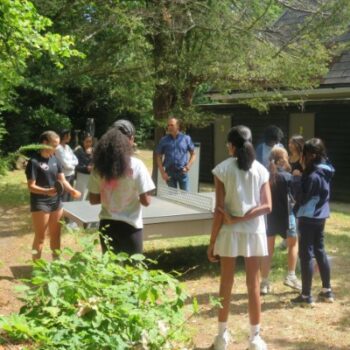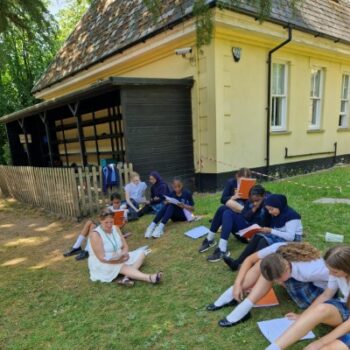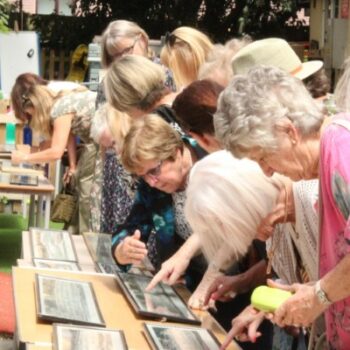Year 10 continue to develop their practical skills when they investigated rates of reactions using two different methods. The first method was by using two chemicals one called sodium thiosulphate and the other was hydrochloric acid. When sodium thiosulphate reacts with hydrochloric acid, a chemical reaction occurs that produces a cloudy precipitate of sulphur, which eventually turns the solution opaque. The rate of this reaction can be studied by observing the time it takes for the sulphur precipitate to form and make the solution opaque. The class carefully changed the concentration of the compound sodium thiosulphate, keeping the concentration of hydrochloric acid constant and observed how quickly the solution became opaque.
The second method that the students used to measure the rate of reaction was to use a specialist piece of apparatus called a gas syringe. In this experiment they added magnesium powder to hydrochloric acid to produce hydrogen gas. When students changed the concentration of acid added to the magnesium powder, the hydrogen gas produced moved the syringe plunger at different speeds. Students attentively measured the hydrogen gas produced every 30 seconds to find out how concentration affects the of a rate of reaction.



